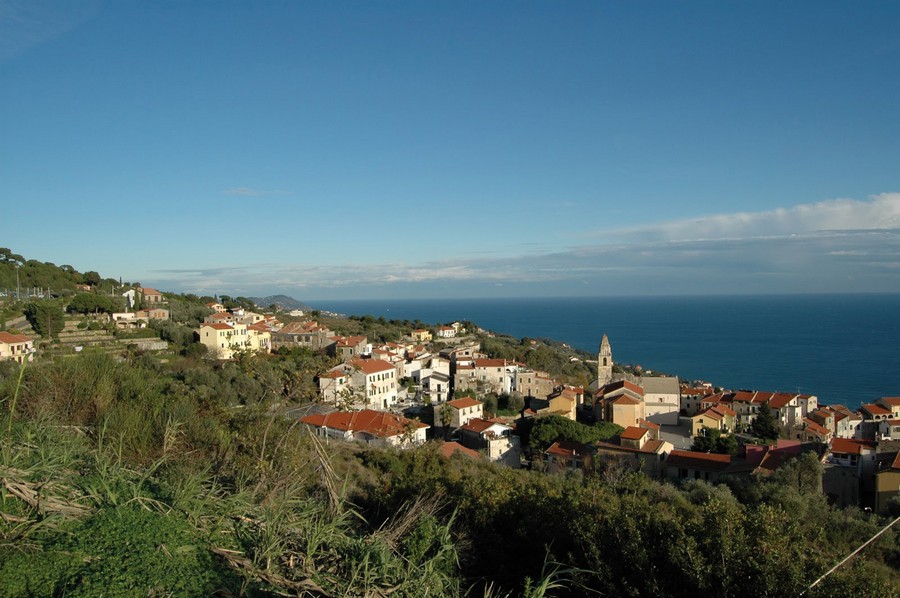Altitude: 20 m a.s.l.
Area: 9.5 sq km
Distance from Imperia: 13 km
Inhabitants: in 1881: 687 - in 2017: 1283
Patron Saint Day: July 2nd - Visitation of the Virgin Mary
Information: Municipality phone 0183 98005
The history of Cipressa is closely linked to that of Taggia to whose domains it belonged.
The parish archive contains a copy of the Statute drawn up by the Benedictines of Santo Stefano and approved in 1215 by Oberto count of Badalucco and son of Guglielmo I of Ventimiglia, who gave the village the first written laws.
Visit of the town
After parking the car in the square next to the bell tower you’ll face the seventeenth-century Baroque church of the Visitation.
As soon as you enter, the frame of the polyptych "Madonna del Rosario" surprises you on the left wall with the fifteen peripheral paintings, lacking however the central painting which was stolen and then recovered to definitively disappear again, therefore behind the frame is now exposed the wooden sculpture "Visitation of the Virgin Mary" naturally attributed to Maragliano.
On the same square stands the eighteenth-century oratory of Santa Annunziata with a sundial on the left wall.
Take the car and go around the apse of the church, continuing to the right following the signs to "Gallinaro"; after about three hundred meters you can park to take a short walk in the historical center of Cipressa.
Entering the main street, before the vault go under the low archivolt of Via Usodimare, which you’ll walk through the end taking then the left until, after passing under the vault of Via Pancaldo, you can go up to the left on the concrete staircase that takes you back to the car.
Continuing in the direction of Gallinaro, after five hundred meters you’ll find on the left side of the road Torre del Gallinaro, a mighty two-storey fortification built in 1544 to defend against the "Turks", which always played a significant strategic role since, dominating with a beautiful panoramic view a wide stretch of the sea, it allowed to spot enemy sails when they were still very distant and therefore to promptly prepare the appropriate defenses.
The tower, pierced by menacing slits, has a square plan with sides of about ten meters and preserves intact parts of the machicolations that crowned the entire frame; inside there are three arches on the ground floor and another three on the upper floor.
In the past, it existed in the village a lay association founded for public charity purposes, which was called the “Holy Spirit”. The Holy Spirit also managed forms of pawn shops guaranteed at land level, as well as hospitality to many destitute pilgrims and travelers.
Returning back, at the crossroads you can go down two hundred meters towards Sanremo to observe on the right, incorporated between the houses at the entrance of Via Cavour, the fifteenth-century two-storey tower-house which preserves the machicolation corbels.
From there, go down to Via Aurelia in the direction of Sanremo; should you instead want to go to Imperia, return to Costarainera and from there descend along the road already traveled on the way up.


